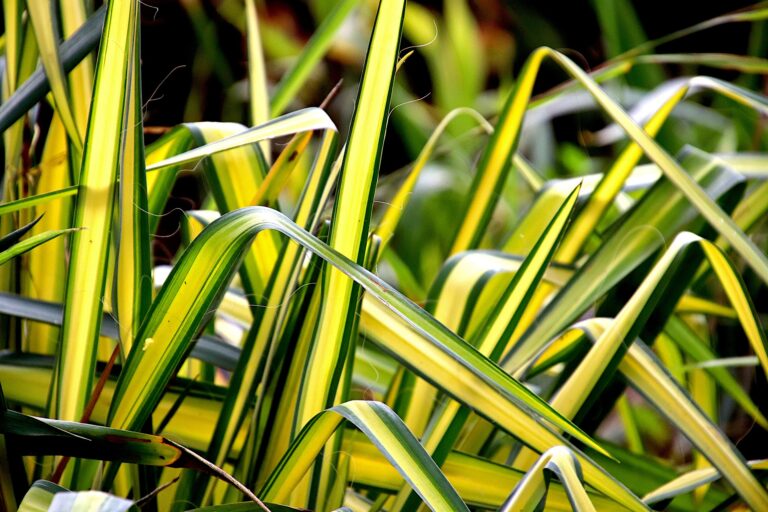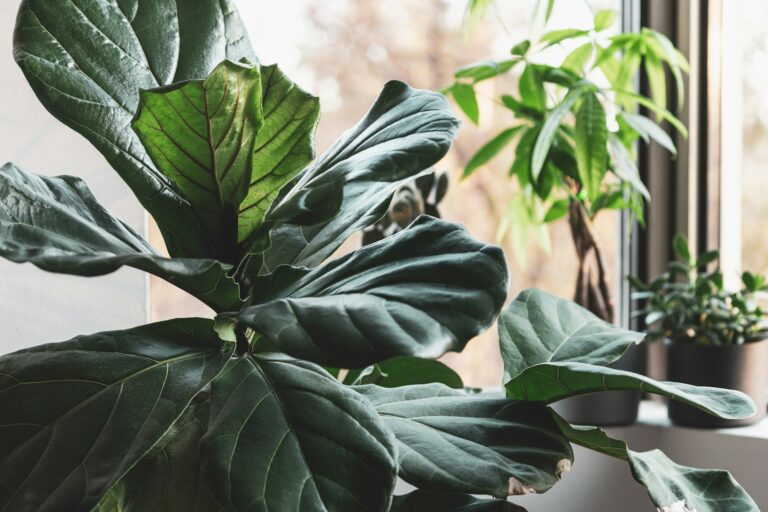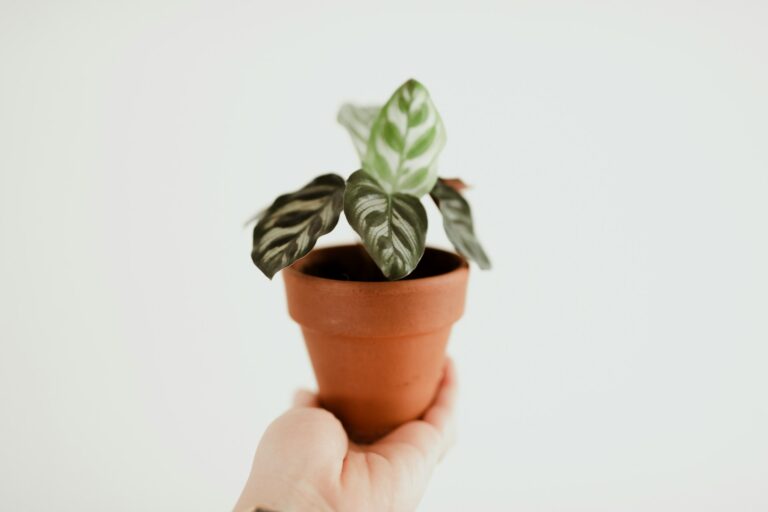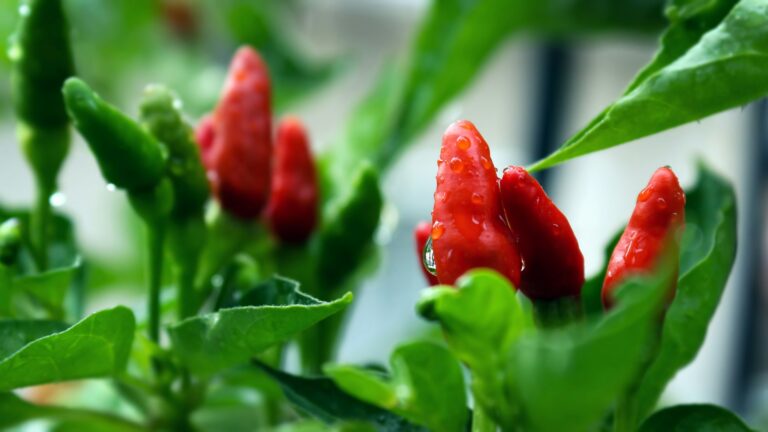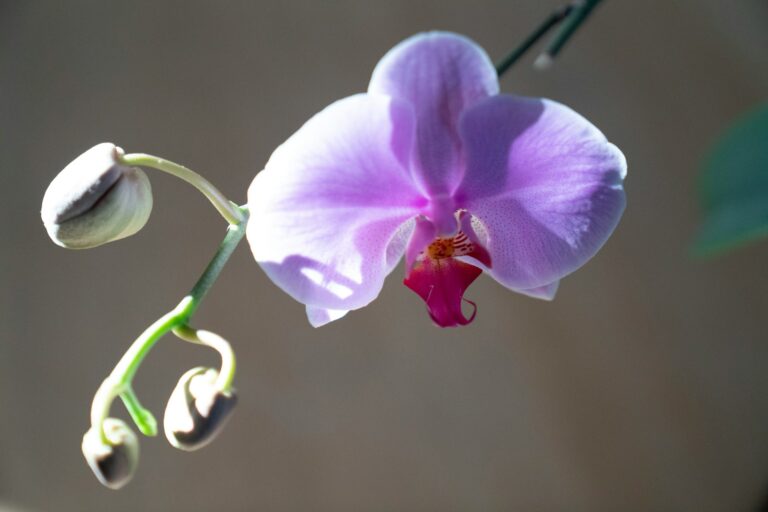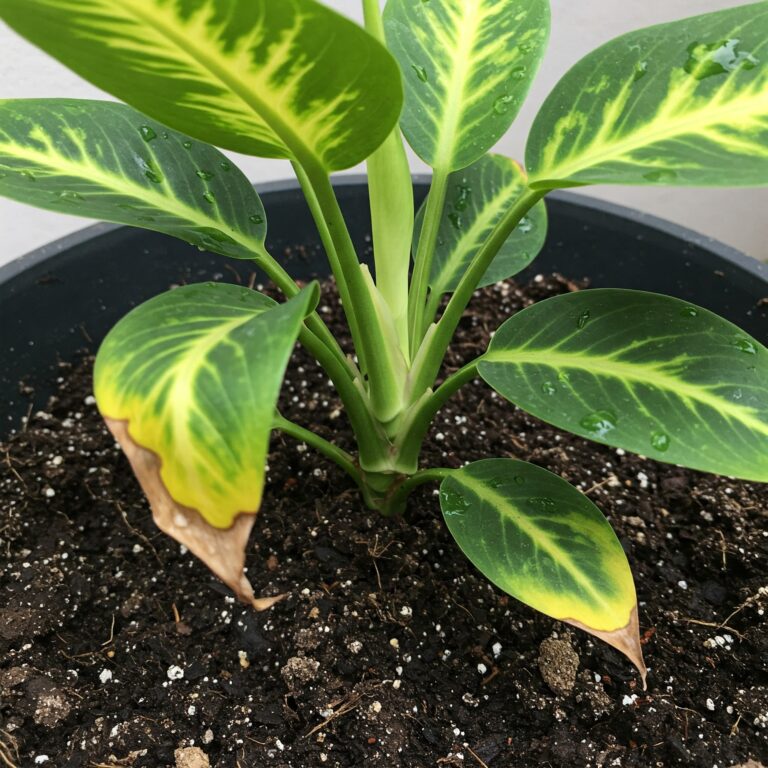Caring for indoor plants is a delightful hobby that adds a touch of nature to our homes and brings numerous benefits. Among the popular choices for indoor greenery is the Pothos plant (Epipremnum aureum).
The plant is known for its vibrant, trailing vines and low-maintenance nature making it easy to care for since it can thrive in various environments. However, one problem people get is watering pothos plants. Most people don’t know the best way to water a pothos plant. Without proper watering techniques, you can lead the plant to its death.
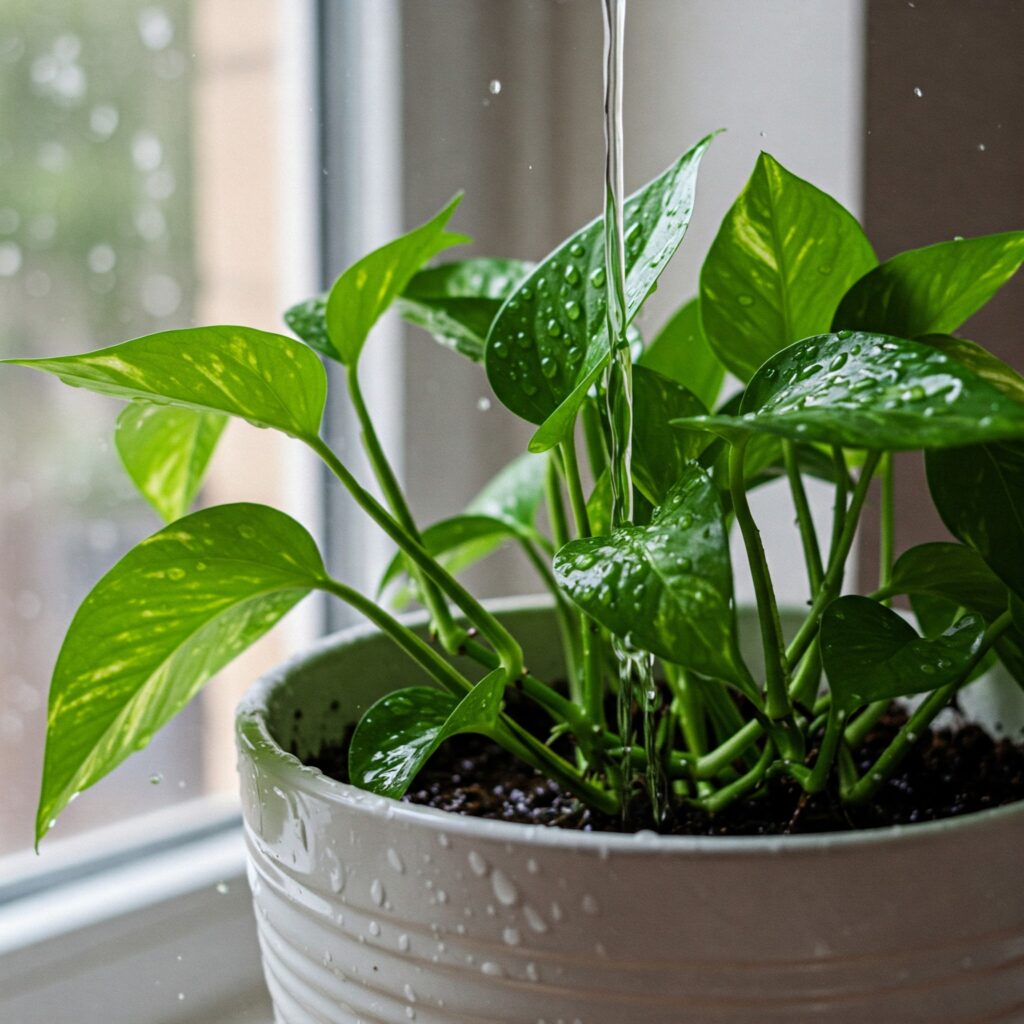
When watering, the best way to water a pothos plant is by achieving the proper water balance. That is, you avoid overwatering and underwatering. Overwatering can lead to root rot, while underwatering can cause the plant to suffer and wither. So, ensure the soil is evenly moist and not too wet or dry. You can check the top inch of the soil for moisture content before watering the plant.
How to water a Pothos plant.
As easy as people make it to be, watering plants at home requires a little skill to ensure you don’t kill your plant by overwatering or underwatering. Besides that, a gardener should understand the plant requirements, location, and environment to determine the best way to water a pothos plant.
Here are steps that you can follow to water a pothos plant at home:
- Check the soil moisture.
Before watering, check the soil’s moisture level by inserting your finger about an inch deep into the soil. If it feels dry, it’s time to water the plant.
- Use the correct water.
Use room temperature water for watering your Pothos plant. Cold water can shock the roots, while hot water can damage them. Let tap water sit out for a day to allow chlorine and other chemicals to evaporate before using it. Alternatively, you can use filtered or distilled water.
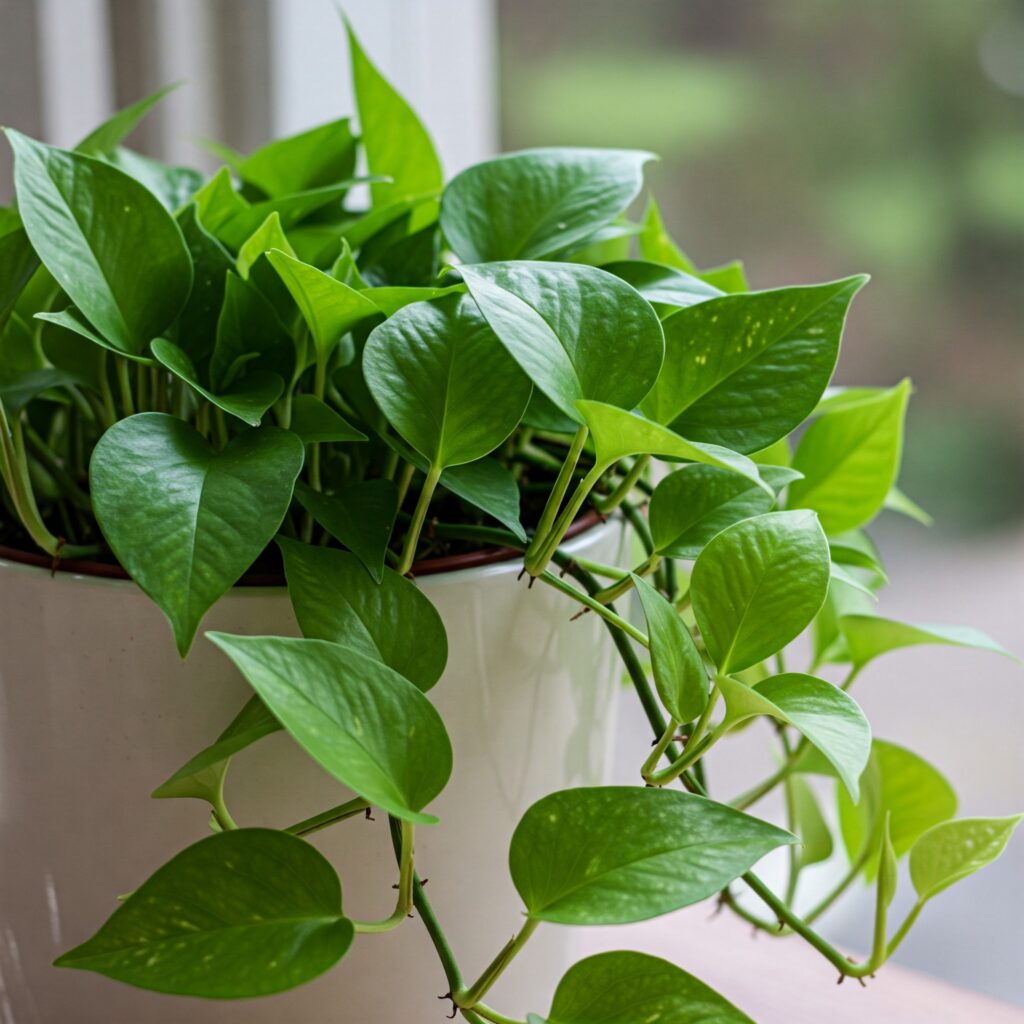
- Prepare the watering container.
Select a watering can or a container with a narrow spout for precise watering. This helps in targeting the soil directly without wetting the foliage excessively.
- Water thoroughly
Slowly pour water into the soil around the base of the plant until it starts to drain from the pot’s drainage holes. Ensure the water reaches all parts of the soil, allowing it to penetrate deep into the root zone.
- Allow drainage.
Ensure that your pot has drainage holes to allow excess water to flow out of the pot. Allow excess water to drain freely from the pot into a saucer or sink. Avoid letting the pot sit in standing water for an extended period, as it can lead to root rot.
- Adjust watering frequency.
Watering frequency depends on factors such as environmental conditions, pot size, and humidity levels. Generally, water your Pothos plant when the top inch of the soil feels dry. However, observe your plant closely and adjust the watering schedule based on specific needs.
- Consider humidity levels.
Pothos plants appreciate higher humidity levels. To increase humidity, you can mist the plant occasionally or place a tray of water near the plant. As the water evaporates, it creates a humid microclimate around the plant.
- Monitor plant response.
Observe your Pothos plant for signs of overwatering or underwatering. Wilting, yellowing leaves, or a foul odor may indicate overwatering, while drooping leaves and dry, brittle soil may suggest underwatering. Adjust your watering practices accordingly.
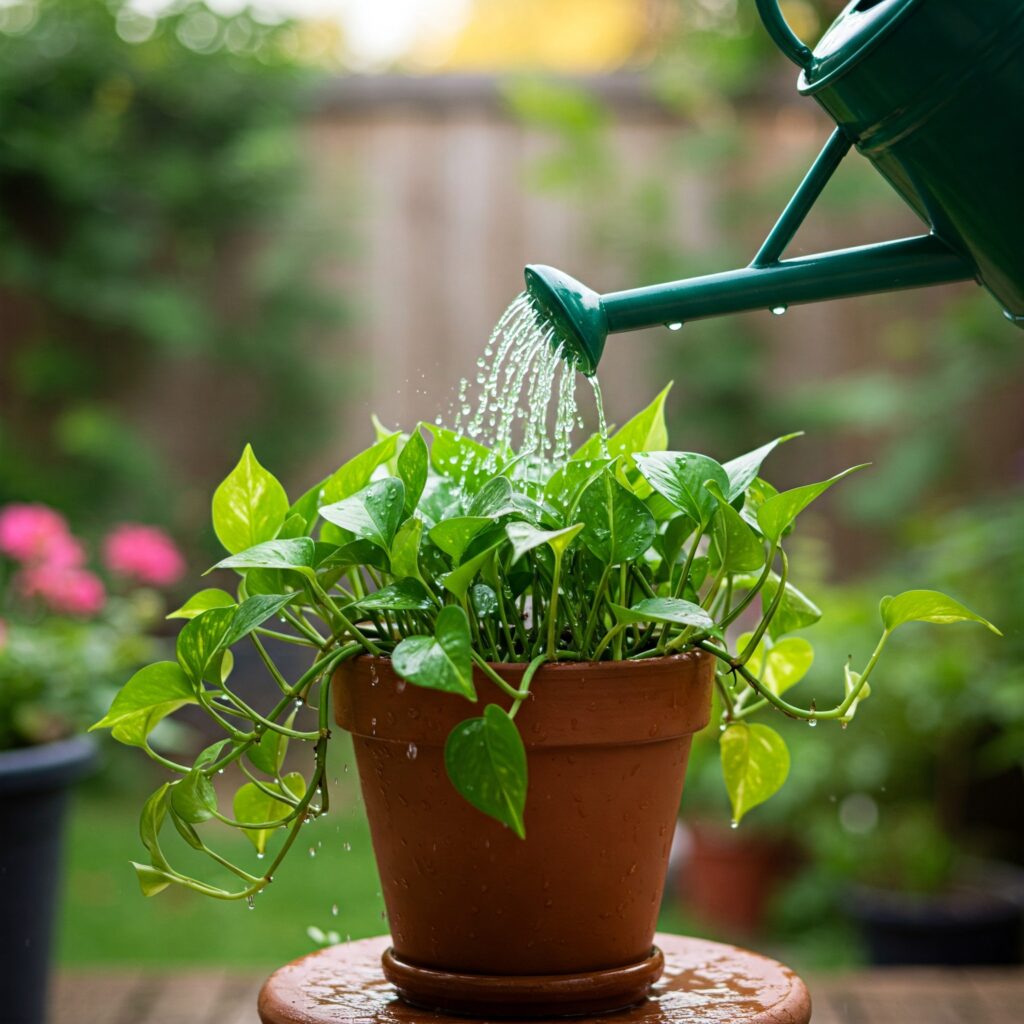
When should I water my pothos plant?
You should water your Pothos plant when the top inch of the soil feels dry. Stick your finger into the soil about an inch deep to check the moisture level. If it feels dry at that depth, the plant needs watering. If it’s wet, then the soil has water, and you don’t need to water at that time.
You can also test the moisture level using the moisture meter. The pothos plant requires water if the reading is 2 to 3.
Remember that the watering frequency may vary depending on various factors such as environmental conditions, pot size, humidity levels, and the plant’s needs.
Generally, you can water a pothos plant every 1 to 2 weeks. However, you can create a watering schedule for a pothos plant to adapt to the specific requirements of your plant.
When creating a watering schedule for a pothos plant, observe the plants’ response to watering. Monitor the condition of the soil and the foliage. If the leaves start to droop or the soil feels extremely dry, it may be a sign that your Pothos plant needs more frequent watering.
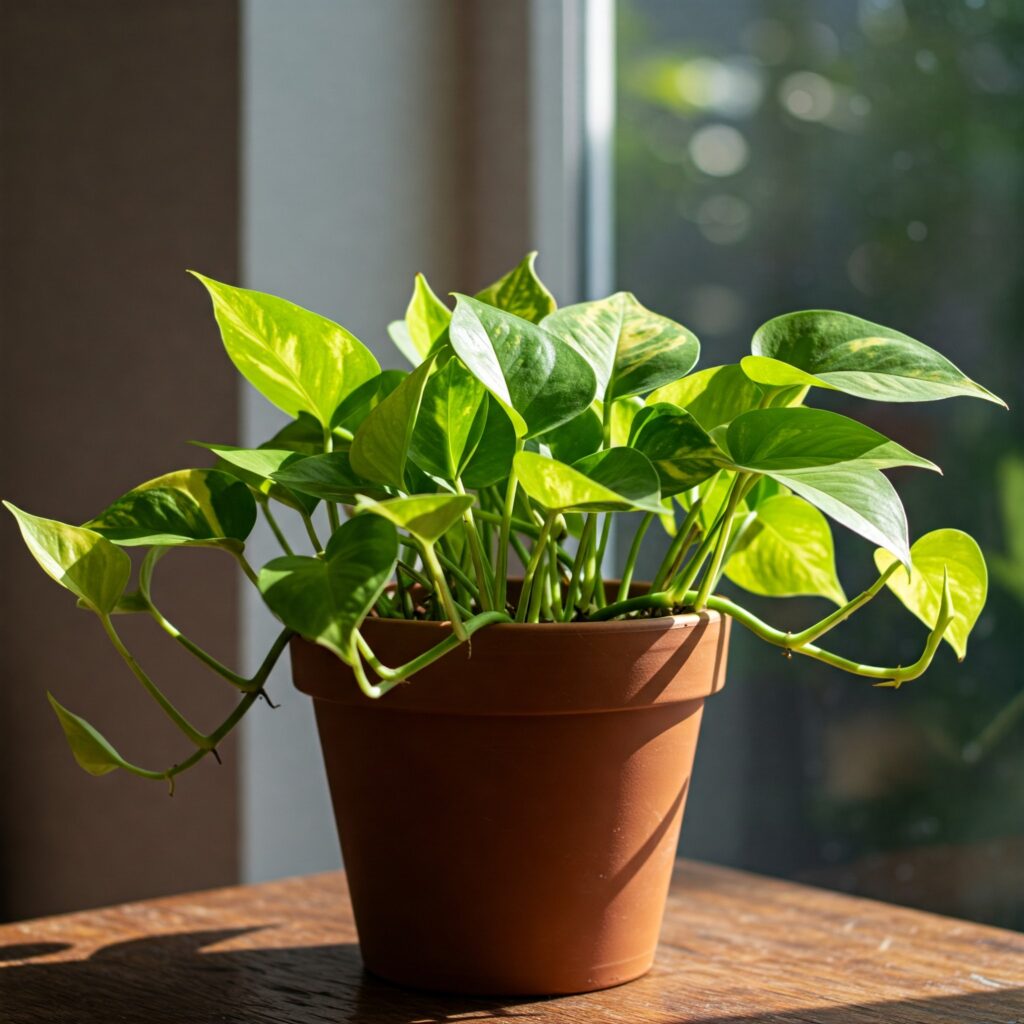
On the other hand, if the leaves appear yellowed or the soil is consistently wet, you may be overwatering. You should adjust accordingly by allowing the soil to dry out more between watering sessions.
Signs that your pothos is thirsty.
When the plant is thirsty, it means that you are giving it little to no water. Since the pothos plant requires water to survive, it will stop producing due to lack of water. If that happens, you will likely notice the signs on the leaves and other parts of the plant.
Here are the signs that indicate a pothos plant requires water.
- Wilting leaves: When a Pothos plant lacks water, its leaves start to droop or wilt. This is a clear indication that the plant is dehydrated and needs watering.
- Dry soil: If you stick your finger into the soil and it feels dry throughout the top inch or more, it suggests the plant is thirsty and requires water.
- Yellowing leaves: Pothos plants may develop yellow leaves when they are underwatered. This is a defensive mechanism to conserve moisture by shedding older leaves. If you notice yellowing leaves that are otherwise healthy and not showing any signs of disease, it may indicate inadequate watering.
- Crispy or brittle leaves: When a Pothos plant is extremely thirsty, the leaves can become crispy or brittle. They may feel dry to the touch and break easily. This is a sign that the plant has been without water for an extended period and is experiencing severe dehydration.
- Slow growth: If your Pothos plant is not receiving enough water, it may exhibit slower growth than when it is adequately hydrated. Lack of water can hinder the plant’s ability to absorb nutrients and carry out essential biological processes, resulting in stunted growth.
While these signs indicate a thirsty Pothos plant, it’s best to combine these indicators rather than rely solely on one sign. Regularly checking the soil moisture and observing the plant’s overall health and appearance will help you determine when it needs watering.
Signs that your pothos is overwatered.
Overwatering is a common mistake made by plant owners. Most don’t even realize it’s overwatering until it’s too late. But, with these signs, you can quickly determine if your plant has excess water.
Here are the signs of an overwatered pothos plant.
- Yellowing leaves: Overwatering can lead to yellowing leaves. However, when overwatering, the leaves turn a pale yellow or translucent. Excessive moisture can hinder the plant’s ability to take up nutrients, leading to nutrient deficiencies and yellowed foliage.
- Wilting leaves: While wilting can be a sign of both underwatering and overwatering, overwatered Pothos plants may also exhibit wilting leaves. However, in this case, the leaves will appear soft and limp rather than dry and crispy.
- Root rot: Overwatering can cause the roots of a Pothos plant to become waterlogged, leading to root rot. If you notice a foul smell coming from the soil, mushy or dark-colored roots, or roots that appear slimy or disintegrating, it’s a strong indication of root rot caused by excessive moisture.
- Mold or fungus growth: Excessive moisture promotes the growth of mold, fungus, or algae growth on the surface of the soil or the plant itself. Observing fuzzy white mold, black spots, or a powdery substance on the leaves or soil suggests that the plant is being overwatered.
- Slow growth or lack of new growth: Overwatered Pothos plants may exhibit stunted or slow growth. The excessive moisture can prevent the roots from accessing sufficient oxygen, hindering nutrient uptake and impeding the plant’s overall development. Additionally, overwatering can cause the plant to divert energy away from new growth, resulting in a lack of fresh leaves or trailing vines.
When you notice these signs of overwatering, allow the soil to dry out before watering again. Also, ensure the pot has drainage holes to prevent water from accumulating in the pot. Lastly, trim away infected leaves, stems, or roots to help the plant recover.
Factors that influence your pothos watering schedule.
When creating a watering schedule for a pothos plant, there are various factors that you should consider. These factors will help you determine the amount of water your pothos needs. These factors include:
Environmental conditions.
The temperature and humidity levels in your home or growing area play a significant role in the watering needs of your Pothos plant. Higher temperatures and lower humidity levels increase evaporation, leading to faster soil drying. In contrast, cooler temperatures and higher humidity levels slow evaporation, resulting in slower soil drying. Adjust the watering frequency based on the prevailing environmental conditions.
Pot size and type.
The size of the pot in which your Pothos plant is growing affects its water retention capacity. Smaller pots dry out more quickly compared to larger ones. Additionally, pots made of porous materials such as terracotta allow for more airflow and water evaporation, which can impact the watering frequency. Consider the pot size and material when determining your Pothos plant’s watering needs.
Seasonal variations.
Pothos plants may have different watering requirements during different seasons. For example, they may require more frequent watering during hot, dry summers than cooler, humid seasons. For example, when the temperature is above 77 degrees F, the soil will dry faster, while when the temperatures are below that, the soil will remain damp for long periods.
Plant size and growth stage.
The size and growth stage of your Pothos plant also influences its water requirements. Larger plants with a more extensive root system may require more water to reach all the roots adequately. Additionally, younger plants or those actively growing may have higher water needs than mature or dormant plants.
Light exposure.
The amount and intensity of light the Pothos plant receives can impact its water requirements. Plants in brighter, sunnier locations may experience faster soil drying and may need more frequent watering. On the other hand, plants in lower light conditions may dry out more slowly and require less frequent watering.
Soil type and quality.
The soil type and quality in which your Pothos plant is potted can affect its water retention and drainage properties. Well-draining soil allows excess water to escape easily, reducing the risk of overwatering. Consider using a well-balanced potting mix that retains enough moisture but allows proper drainage.
Plant health and growth rate.
The overall health and growth rate of your Pothos plant can also influence its water requirements. Healthy, actively growing plants may need more water compared to stressed or slow-growing plants. Monitor the plant’s vitality and adjust the watering schedule accordingly.
